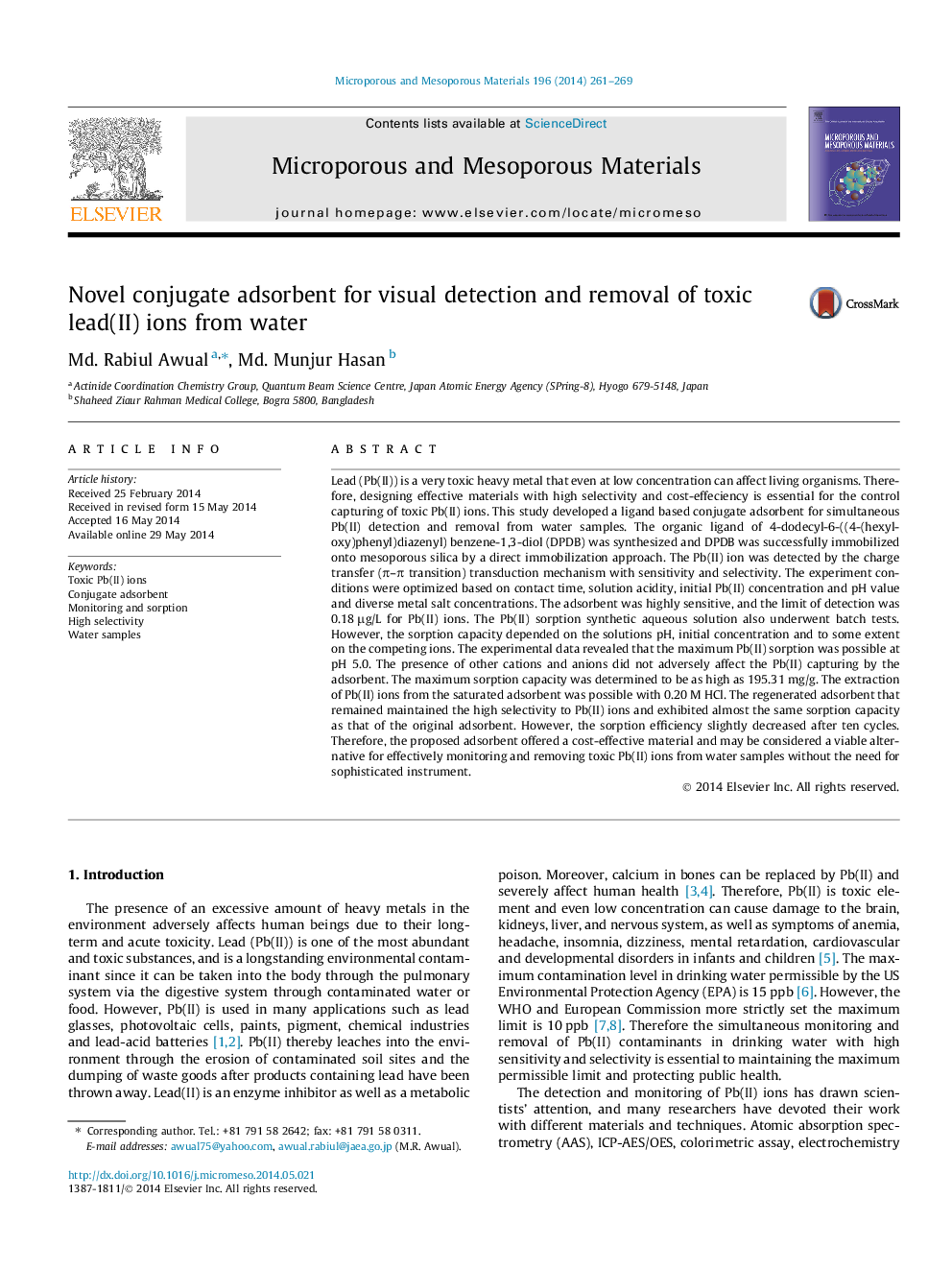| Article ID | Journal | Published Year | Pages | File Type |
|---|---|---|---|---|
| 73012 | Microporous and Mesoporous Materials | 2014 | 9 Pages |
•Ligand immobilized conjugate adsorbent was prepared for Pb(II) capturing systems.•Adsorbent can be selectively captured the Pb(II) ions with high sensitivity.•Adsorbent exhibited spherical and nanosized cavities for high Pb(II) sorption.•Adsorbent is reversible and reusable without loss from its original performances.
Lead (Pb(II)) is a very toxic heavy metal that even at low concentration can affect living organisms. Therefore, designing effective materials with high selectivity and cost-effeciency is essential for the control capturing of toxic Pb(II) ions. This study developed a ligand based conjugate adsorbent for simultaneous Pb(II) detection and removal from water samples. The organic ligand of 4-dodecyl-6-((4-(hexyloxy)phenyl)diazenyl) benzene-1,3-diol (DPDB) was synthesized and DPDB was successfully immobilized onto mesoporous silica by a direct immobilization approach. The Pb(II) ion was detected by the charge transfer (π–π transition) transduction mechanism with sensitivity and selectivity. The experiment conditions were optimized based on contact time, solution acidity, initial Pb(II) concentration and pH value and diverse metal salt concentrations. The adsorbent was highly sensitive, and the limit of detection was 0.18 μg/L for Pb(II) ions. The Pb(II) sorption synthetic aqueous solution also underwent batch tests. However, the sorption capacity depended on the solutions pH, initial concentration and to some extent on the competing ions. The experimental data revealed that the maximum Pb(II) sorption was possible at pH 5.0. The presence of other cations and anions did not adversely affect the Pb(II) capturing by the adsorbent. The maximum sorption capacity was determined to be as high as 195.31 mg/g. The extraction of Pb(II) ions from the saturated adsorbent was possible with 0.20 M HCl. The regenerated adsorbent that remained maintained the high selectivity to Pb(II) ions and exhibited almost the same sorption capacity as that of the original adsorbent. However, the sorption efficiency slightly decreased after ten cycles. Therefore, the proposed adsorbent offered a cost-effective material and may be considered a viable alternative for effectively monitoring and removing toxic Pb(II) ions from water samples without the need for sophisticated instrument.
Graphical abstractFigure optionsDownload full-size imageDownload as PowerPoint slide
